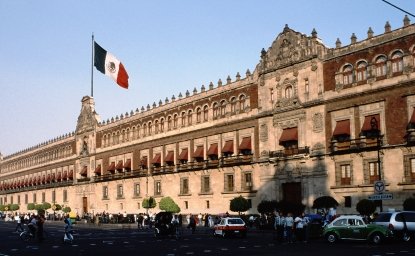With a shocking 120 politicians reportedly killed in the lead up to Mexico’s July 1st election, what does this violence mean for Mexico’s electoral process and, ultimately, its democracy? A deeper look at this number offers several insights into the criminal and security landscape in Mexico, and suggests ways policy should change to better address the problem.
1) With a few exceptions, the majority of those killed have been candidates for local office, such as mayor or town council. A few were candidates for state legislature, and one case involving a candidate for the federal legislature (Chamber of Deputies) drew widespread attention – still, this was an outlier.
What does this tell us? It confirms that much of the violence and criminal activity shaking Mexico is about control of local criminal markets, commonly known as la plaza. The violence can reflect conflicts between local criminal groups competing for control of a particular plaza. They fight to extort economic activity in a particular area and the right to charge “taxes” on illicit products passing through a territory.
At times, local officials become victims of these conflicts. For example, a politician may have reached an “arrangement” with a local criminal group to ensure the peace and in the process personally benefit. This same politician can become a victim if there is a change in leadership among the local criminal organization and s/he is no longer needed or trusted; or, if a second criminal group seeks to challenge for control of the “plaza” and the local politician is too closely tied to the existing criminal group.
Of course, the local politician or candidate could also try to be honest, refusing any arrangement with criminal groups, but such principled stances are extremely risky. The ability of a local politician to protect her/himself is limited since s/he would have to rely on protection from state or federal officials. Simply put, there are too many such cases in Mexico’s nearly 2,500 municipalities (akin to counties) that neither state nor federal officials are able to reliably protect all local authorities or citizens who try to stand up to criminal groups.
2) The victims are from different political parties. There is no evidence to suggest that the victims are targeted solely for their party affiliation or political beliefs. Victims represented all political parties from MORENA – the party of the likely presidential victor, Andrés Manuel López Obrador (AMLO) – to the governing PRI party, to the right-left coalition (PAN-PRD), and smaller splinter parties.
Some have suggested that the criminals favor AMLO’s “leftist” party because he has talked about an amnesty for small farmers, who cultivate illicit crops, and the low-level traffickers that move the product. But MORENA has suffered casualties as well, albeit fewer in number, with 11 political killings. Furthermore, the party suffering the greatest number of casualties is the current governing PRI party, having experienced 43 killings. During its six years in the presidency, the PRI has been rocked by numerous corruption scandals, especially at the local level involving former and current governors accused of being affiliated with local criminal groups.
There is simply not enough data to suggest criminal groups are favoring one political party over the other across the country. As suggested, criminal conflicts are primarily about control of local markets and, as such, do not have much to do with political ideology. More important than party affiliation is the relationship a particular victim had or was trying to establish with local criminal organizations.
3) 2017 was Mexico’s most violent and homicidal year on record, and 2018 may set another record. Nearly 30,000 Mexicans were killed in 2017, with over 100,000 killed during the nearly six years of the current government of Enrique Peña Nieto. May 2018 was the deadliest month ever. Elevated levels of violence, insecurity, and the ineffectiveness of the state in addressing these problems are at the center of the current election. Mexicans are understandably desperate for a solution and are increasingly fed up with the inability of traditional political parties to address these problems. The stunning rise in deaths among local politicians is occurring in the broader context of a national rise in killings. This is not to minimize the importance of deaths among politicians, but to offer a context that the majority of Mexicans see on a daily basis.
4) What can we infer from the rising homicides among Mexican politicians? These deaths are a strong warning sign, a massive red flag waving at Mexicans, and all of us who care about the country, that Mexico is in the danger zone. These deaths reflect the inability of the state to protect its citizens. It represents the slow persistent erosion of state control and local institutions that are slowly suffocating the country’s democracy.
5) What can be done? For Mexico, it means it must refocus its strategies and efforts on rebuilding local control of territory and institutions. This means more than simply deploying large numbers of military troops to patrol an area. Deploying military or federal police may displace criminals for a while but it does nothing to rebuild local justice and law enforcement institutions, or the people’s confidence in their authorities. Thus far, AMLO has not articulated a clear plan or strategy for regaining control of local territory and rebuilding democratic institutions from the bottom up.
For the United States, it means expanding priorities to include support for Mexican efforts to reestablish control at the local level. The tendency is to reduce U.S. interests to stopping drugs coming into our country and fighting transnational organized crime (TCOs). But the growing violence in Mexico and the lack of functioning local institutions is eroding Mexico’s ability to establish security overall and maintain control of parts of its national territory. A narrow focus on TCOs at the expense of local security will result in an increasingly weakened Mexico where local populations have less and less faith in their authorities, and where local criminal groups replace the legitimate state as the guarantors of security.
This is the scenario Mexicans and the United States should avoid, and it means refocusing and investing locally in better police, prosecutors, judges, transparent and accountable government, and independent press, to name a few. It also means better economic opportunities, education, and access to healthcare. These are Mexican responsibilities, but the United States needs to be willing and able to support those efforts.
This article was originally published on the Mexico Institute's blog on Forbes.com.






